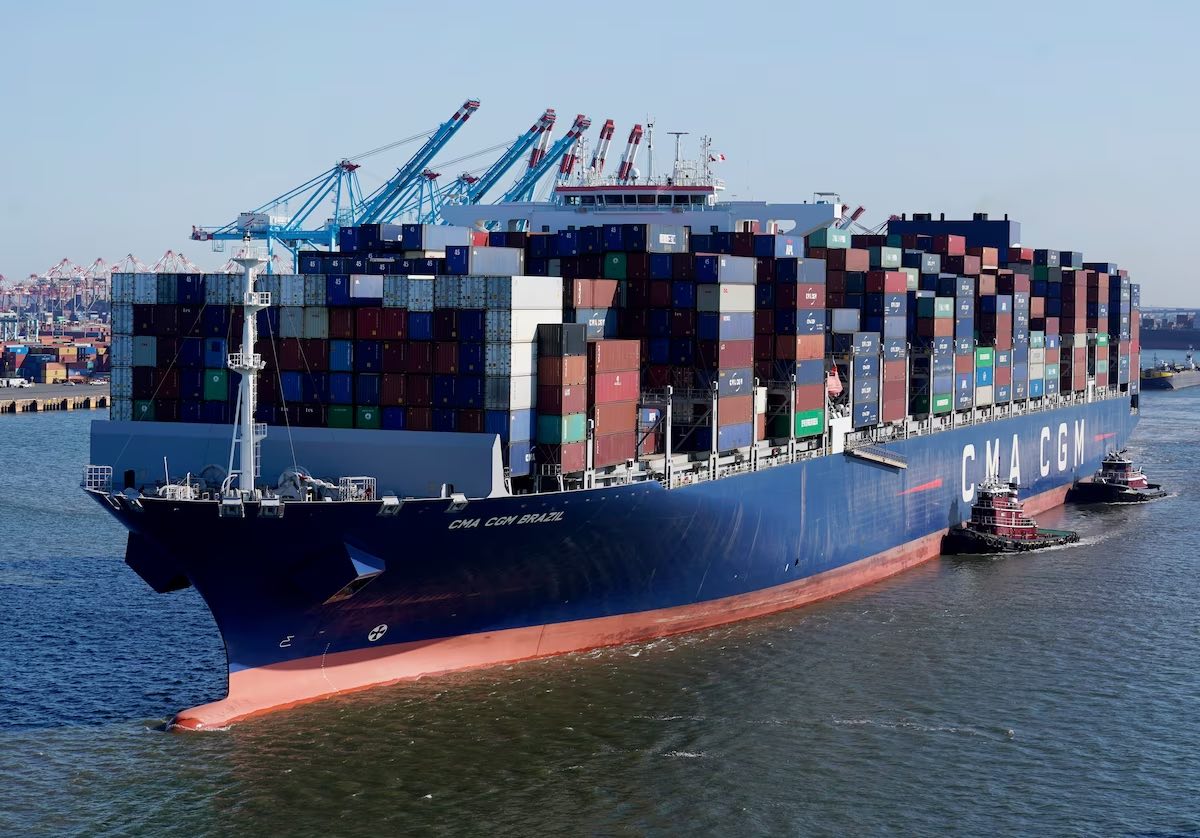World shipping body votes on ‘historic’ emissions cuts to curb warming
from WaPO
Previously, the IMO pledged to reduce its emissions by half by 2050 — so Friday’s agreement is a clear advance.
More importantly, the world’s shipping nations also agreed to interim goals to cut greenhouse gas emissions “by at least 20 percent, striving for 30 percent, by 2030” and “by at least 70 percent, striving for 80 percent,” by 2040.”
These soft targets are below what the Biden administration and other “high ambition” nations were pushing for.
But the new targets announced Friday signal how even the most resistant sectors are being pushed and pulled to help the planet hold future warming to 1.5 degrees Celsius (2.7 Fahrenheit) — to stave off dramatic sea-level rise and other perils.
Ocean transport contributes about 3 percent of humankind’s greenhouse gas emissions. While that number might not seem like much, if the shipping sector were a country, it would be Germany — and among the top 10 polluters.
Environmentalists characterized Friday’s agreement as positive — but far from what was needed.
Whit Sheard, an expert in shipping emissions at Ocean Conservancy, an environmental group, said the IMO has sent “a strong signal by historically committing to fully decarbonizing the shipping sector but has missed an enormous opportunity to cut emissions immediately.”
The United States and other countries were pushing for deeper cuts — much sooner.
“Caving to fossil fuel interests in the short term leaves a lot of work for industry and individual countries in the face of a global climate crisis,” Sheard said.
Essentially, almost every import in a modern American home and garage arrives by boat — cars, appliances, furniture, clothes — and increasingly a lot of the food in the kitchen, too, like frozen burgers from Argentina or green bananas from Colombia.
About 90 percent of the world’s trade travels by ship — a ceaseless movement of 60,000 vessels plying their routes, moving 11 billion tons of goods each year.
The shipping industry — vital for trade, but fiscally conservative; international, but greatly influenced by a small number of magnates in a handful of countries — plays an outsize role in climate change.
It is traditionally a dirty sector, as most boats burn a heavy fuel oil.
IMO Secretary General Kitack Lim called the new targets “a monumental development” that “opens a new chapter toward maritime decarbonization.”
But he acknowledged the disappointment that more wasn’t done. “It is not the end goal,” he said. “It is in many ways a starting point for the work that needs to intensify even more over the years and decades ahead of us.”
John Maggs, president of the Clean Shipping Coalition, representing environmental groups pushing for greater reductions in emissions, said, “There is no excuse for this wish-and-a-prayer agreement.”
“The level of ambition agreed is far short of what is needed to be sure of keeping global heating below 1.5 Celsius, and the language seemingly contrived to be vague and noncommittal,” he said.
The International Maritime Organization described the deal as “historic” and said the “carbon intensity” of ships is expected to decline over time with new technologies.
One solution that seemed almost science fiction a few years ago may soon become commonplace, as cargo vessels are outfitted with “sails” mounted on their decks.
These won’t be traditional canvas managed by ropes but could be giant kites, spinning rotors or telescoping hard sails — think of a folding airplane wing — that harness wind power to propel the vessel.
If the new climate goals are adopted by the IMO this week, one result could soon be voluntary speed limits out in the oceans.
Modern cargo vessels capable of doing 25 knots or more may be “slow-steaming” at half that speed.
To meet the 2040 and 2050 goals, the industry will need to transition to alternative shipping fuels, such as ammonia and green hydrogen. The new fuels will require massive investment — new engines, new port infrastructure and a steady supply of fuels.
The A.P. Moller-Maersk shipping company announced it is ready to go with the world’s first methanol-enabled container vessel.





